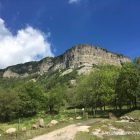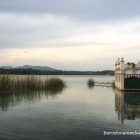Olot is the largest town in the Garrotxa Volcanic Zone, a natural park approximately one hundred kilometres northwest of Barcelona. As the name implies, the area is known for its volcanoes, four of which are located within the city itself.
The volcanos last erupted more than eleven thousand years ago and are now mostly covered by trees. The city of Olot dates back to the ninth century, although little remains of the original buildings due to a major earthquake which shook the area in 1427.
With a current population of thirty-six thousand, Olot is an attractive and compact city with plenty of things to see during a day trip. In addition to the volcanoes, you can explore the historic town centre, check out the colourful modernista architecture, relax at one of the pavement cafés near Passeig de l’Escultor Miquel Blay and visit one or more of the city’s excellent museums.
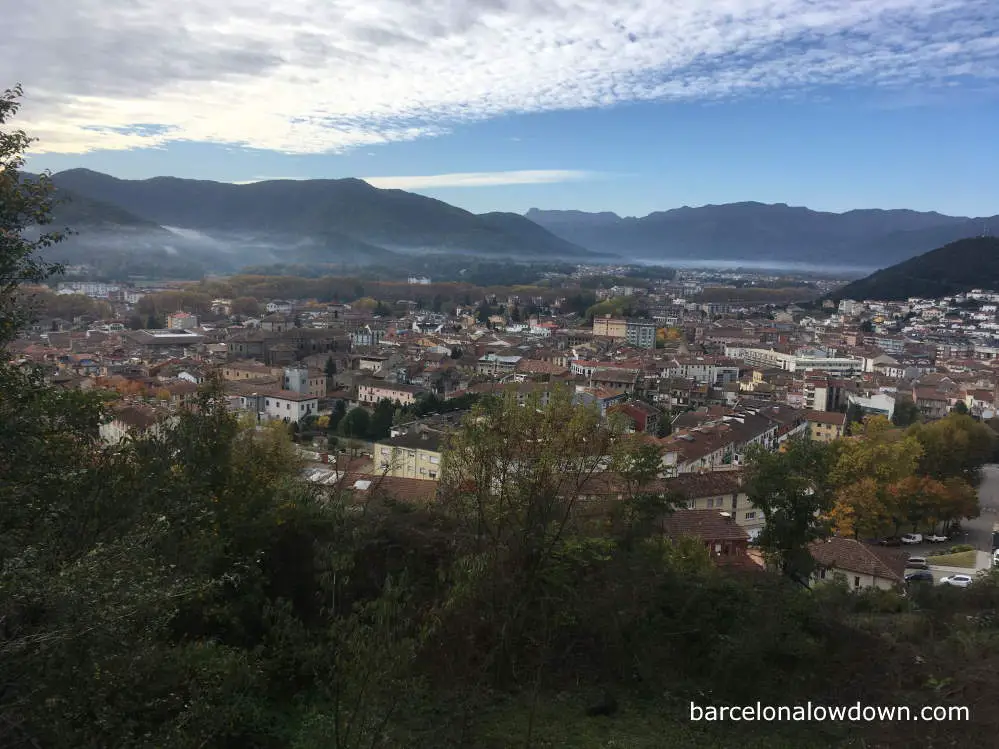
Things to see and do in Olot
Here’s my list of the best places to visit in Olot.
The Montsacopa Volcano
On a day trip to Olot, you should first climb to the top of the Montsacopa Volcano. There are two “official” routes up the volcano, both of which start near the cemetery, a five-minute walk from the town centre. There’s no mountaineering involved; you follow one of the concrete paths up. You’ll also see a few dirt tracks leading up the volcano, which are shortcuts.
Once at the top of the volcano, you’ll see panoramic views of Olot and some of the forty volcanos which surround the city. At the peak, there’s a small chapel, two defensive towers and a bar, which is a popular place to watch the sunset. You can also walk down into the volcano’s crater.
Espai Cràter: the volcano museum
With all this talk about volcanoes, it will come as no surprise that Olot has a museum dedicated to volcanoes and the origins of planet earth. Esapai Cràter was inaugurated in 2022 and replaced the previous volcano museum in Olot.
The new museum uses interactive audiovisual displays to explain how volcanoes form and is geared towards families and school groups, although there is enough information to keep adults interested.
Interestingly, the museum, which is mostly underground, is actually located inside a volcano and is heated using geothermal energy.
More information and tickets here >>
Tip: If your kids like volcanos, I recommend you also take them to the Grederes de Croscat, a few kilometres from Olot, where they can see inside a real volcano.
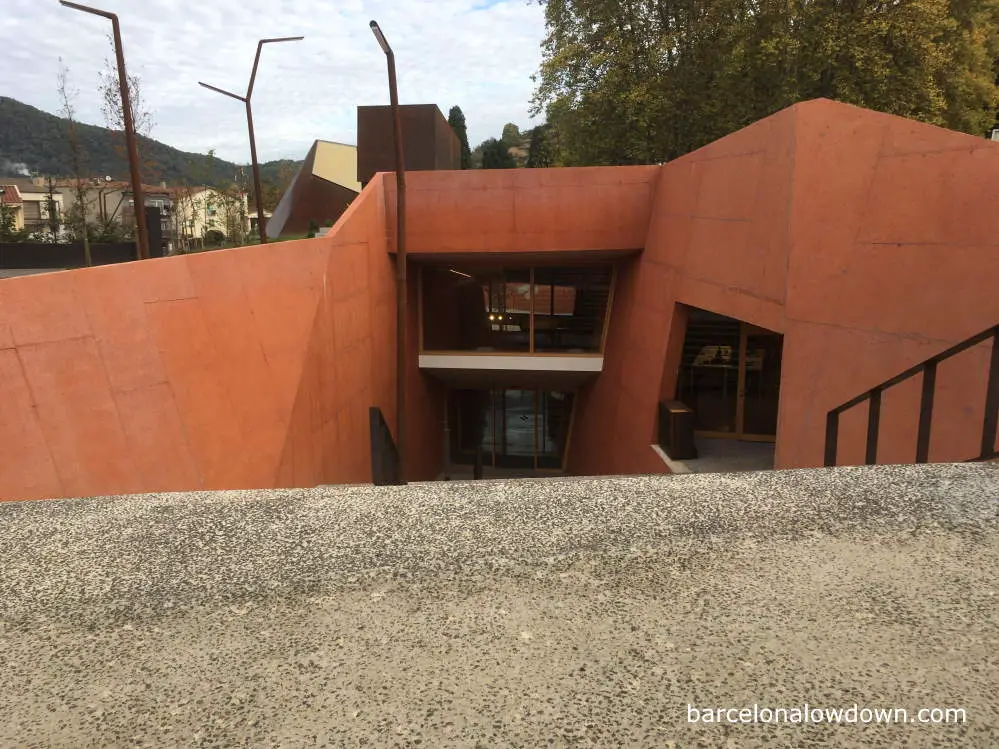
The Garrotxa Museum
The Garrotxa Regional Museum is housed in an eighteenth-century hospital building. The museum has an interesting collection of art by local and foreign artists who lived in the area, as well as a large collection of Art Nouveau tobacco adverts.
As you enter the hospital building, there’s a small gallery to the right of the entrance. This is NOT the museum. To get to the museum, you cross the covered courtyard and take the rather shaky lift up to the third floor.
More information here.
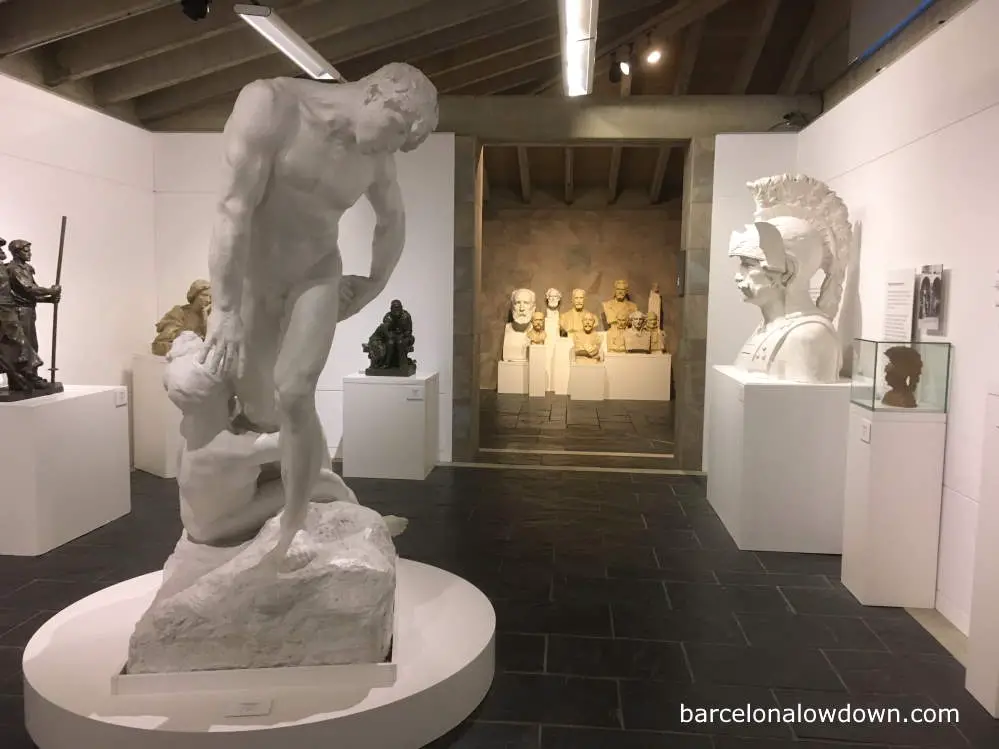
Museu dels Sants (The Saints Museum)
If you like quirky museums, make sure you visit the Saints Museum (Catalan: Museu dels Sants).
During the twentieth century, Olot was an important centre for producing religious statues. So much so that the city had several large workshops which specialised in making them, one of which has been converted into a museum.
More information here.
Art Nouveau buildings
Olot city centre is dotted with a handful of impressive Art Nouveau buildings, the most notable of which are Casa Gaietà Vila, Casa Gassiot and Casa Solà-Morales.
Unfortunately, none of the buildings are open to the public, although it’s worth picking up one of the free maps from the Tourist Office and admiring them from the outside.
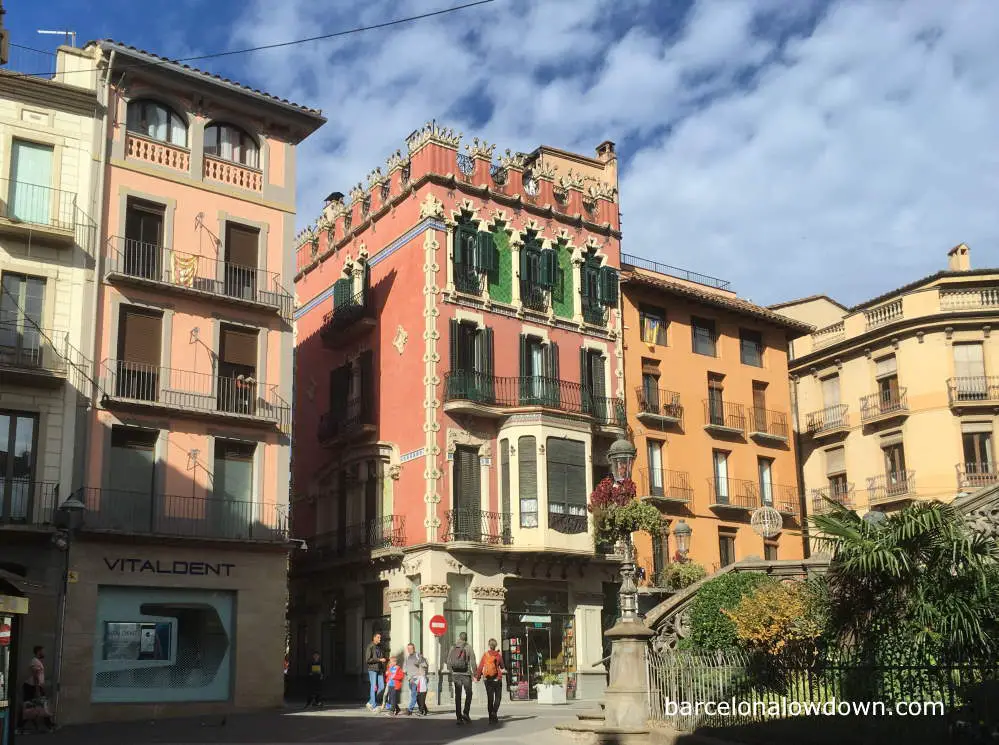
Can Trincheria Museum
Can Trincheria is an eighteenth-century townhouse which belonged to a wealthy family. The house has been converted into a museum, and several rooms, with their original decoration and furniture, are open to the public.
More information here.
The Church of Sant Esteve
Perhaps the most impressive religious building in Olot is the Church of Sant Esteve, which is located right in the centre of town. Apparently, there has been a church on this spot since the twelfth century, although it has been destroyed and rebuilt on several occasions.
The current building dates back to the eighteenth century. Above the main entrance, there are three large empty niches which used to contain statues of saints that were destroyed in 1936 during the Spanish Civil War.

Claustre del Carme
The Claustre da Carme is a sixteenth-century cloister which is currently home to the Escola d’Art i Superior de Disseny d’Olot. The cloisters are open to the public daily; check opening times here.
The Church of Mare de Déu del Tura
A few metres from the cloisters, the Santuari del Tura dates back to the ninth century and is dedicated to the patron saint of Olot. When the church is open, it’s worth going inside and taking a look at the interior.
Monument to the defeated
Monument als Vençuts (English: Monument to the defeated) is a tribute to the men and women of Olot who died defending the Republic during the Spanish Civil War.
Created by Claudi Casanovas in 2006, the unusual monument consists of a huge slab of clay which has been deep-frozen, fired and then surrounded by concrete slabs.
Apparently, the fact that you can only peek at the block through narrow slots is representative of the intimacy of human suffering. Unfortunately, when we visited in 2022, the space between the block and the slab was littered with dead leaves and empty beer cans.
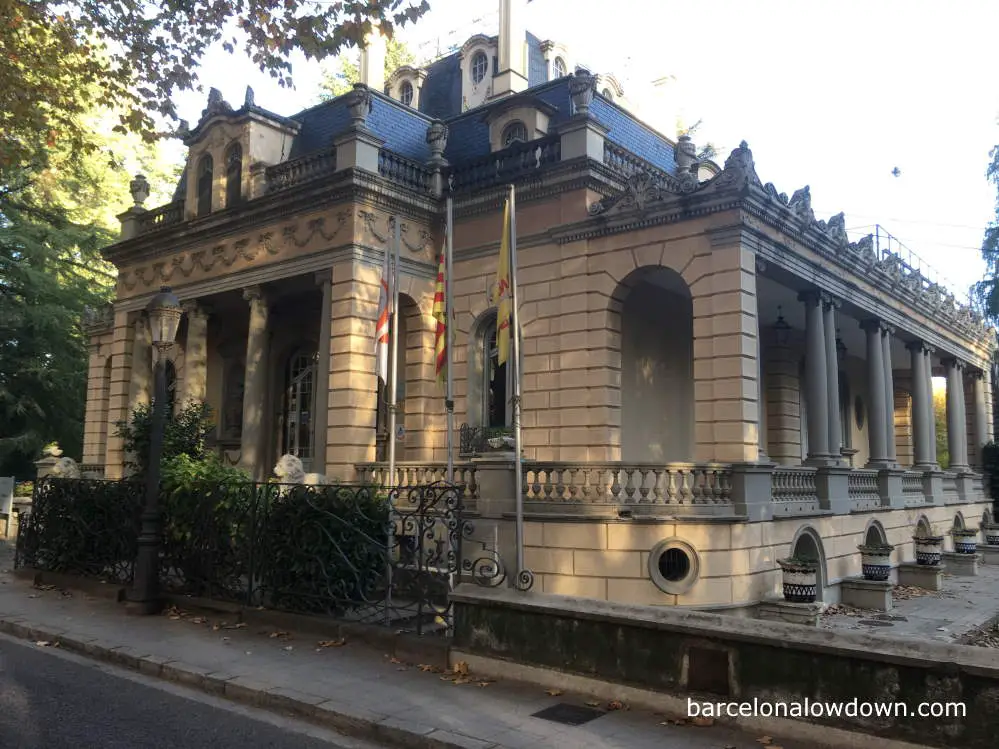
Parks, Gardens and Torre Malagrida
One of the things which struck me whilst visiting Olot was that, in addition to being located in one of the most scenic areas of Catalonia, it is a very green and liveable city. This sensation is partly due to the fact that Olot has several large parks, more than you’d expect for a city of its size.
Another reason is the so-called Eixample Malagrida, an attractive neighbourhood which was developed at the start of the twentieth century and is characterised by elegant mansions and wide tree-lined boulevards. The project was funded by Manuel de Malagrida, who built himself a noucentista palace beside one of the area’s main boulevards. The mansion now belongs to the town council and has been converted into a youth hostel.
Festivals and events in Olot
Festes del Tura
Olot’s annual fiesta is called “Les Festes del Tura”, after the town’s patron saint and takes place around the seventh and eighth of September.
The celebrations include a procession with giants and “big heads” as well as live music and dance. There’s more information about this year’s edition here.
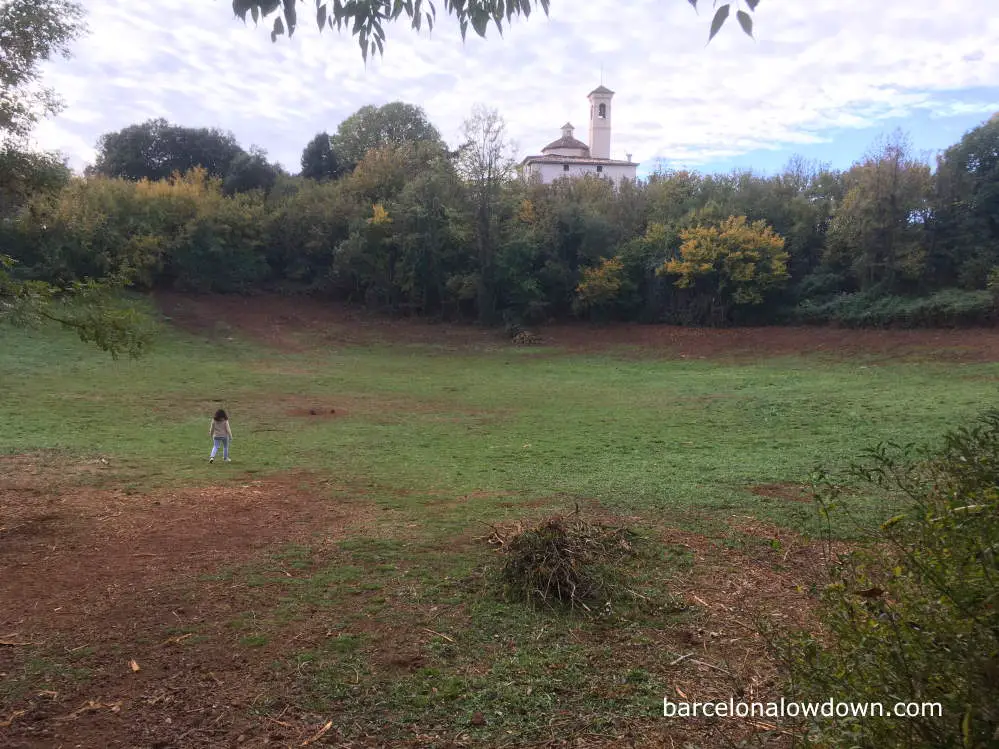
Where to stay in Olot
We stayed at Hotel La Perla, which is a modern, budget hotel with large, spotlessly clean rooms and very friendly staff. The hotel restaurant is also very good. The only downside is that it is a twenty-minute walk from the city centre.
If you’re renting a car and are using Olot as a base for visiting the surrounding area, then I think that Hotel la Perla is a good choice.
If you’re only staying for one night and are using public transport, then a more centrally located hotel, such as Hotel Olot Center would probably be a better choice.
How to get to Olot and where to park
By car
It takes approximately an hour and a half to two hours to drive from Barcelona to Olot, following the C-17 via Vic, followed by the C-37.
The best place to park when visiting Olot is the free car park next to the cemetery at Carrer Pintor Domenge, 17, at the base of the Montsacopa volcano.
By bus
There are ten or eleven buses per day between Barcelona and Olot. The route is operated by TEISA and departs from Av. Gran Vía, 658. Please note that this is NOT a bus station.
The journey takes just over two hours, and the adult fare is approximately €17. Bus timetable and prices here.

Things to do and places to visit near Olot
La Garrotxa Volcanic Zone Natural Park
As I said at the beginning of this post, Olot is located in the Garrotxa Volcanic Zone, and there are plenty of opportunities for hiking in the area. One of the most popular walks is a circular route through the Fageda d’en Jordà beech forest that takes approximately four hours to complete.
“El Carrilet” from Olot to Girona
El Carrilet is a greenway which follows the route of the old narrow gauge railway which used to link Olot with Girona, approximately fifty-seven kilometres away.
The train line closed during the nineteen-sixties and lay abandoned until the early two thousands when it was converted into a greenway.
The path is smooth and flat, with a slight gradient downhill towards Girona, although there are a few sections where it is steeper than you might expect.
Cyclists can complete the entire route in a day and normally ride downhill from Olot to Girona. More info here.
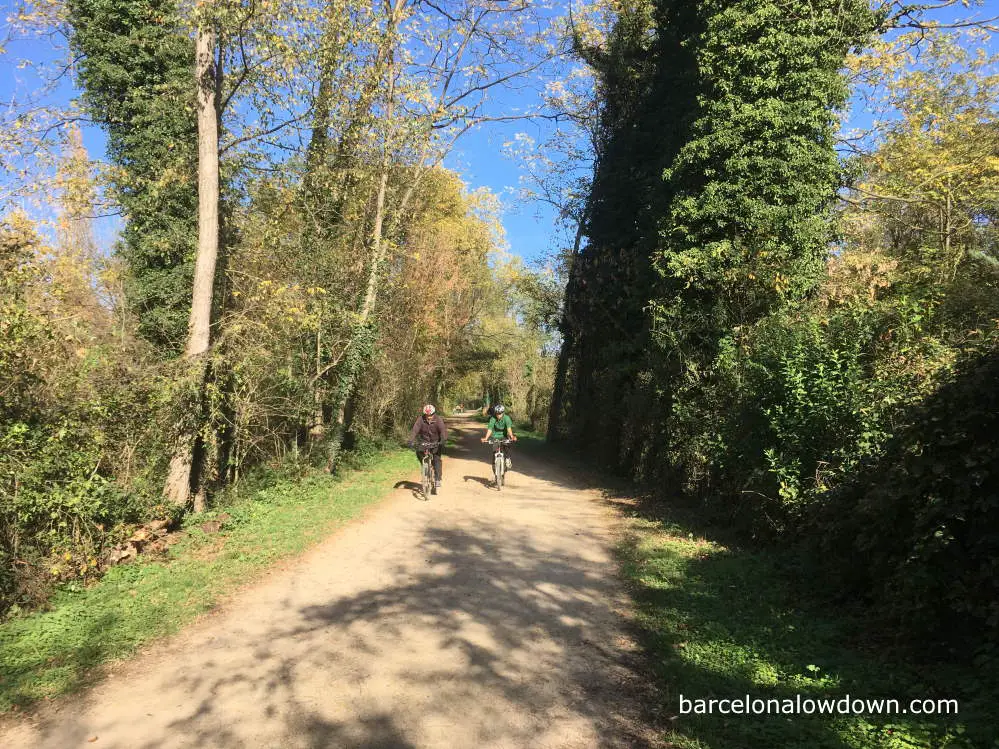
You can also walk the Carrilet, in which case it will typically take either two or three days. There are several villages along the way with accommodations for hikers.
I walked from Girona to Olot and spent the night at Amer, which is approximately mid-way. Although this is uphill, there’s only a slight gradient, and since I was walking in the autumn, it has the advantage that the sun is on your back.
If you decide to do the same, I recommend that you stay at Hostal Sant Marçal, which is on the main road just outside the village.
Santa Pau
Santa Pau is a tiny and highly picturesque medieval village in the Garrotxa Volcanic zone, ten kilometres from Olot. The village dates back to the thirteenth century when the Barons of Santa Pau built a castle on a hilltop beside the River Ser.

Castelfollit de la Roca
One of the most photogenic villages in Catalonia, Castellfollit de la Roca stands precariously on a narrow outcrop of volcanic rock, ten kilometres from Olot.
The village’s twelfth-century houses, made of dark volcanic rock, overhang fifty-metre-high cliffs at the confluence of the rivers Fluvià and Turonell.
Besalú
Besalú is one of the best-known medieval villages in Catalonia, largely thanks to its impressive eleventh-century stone bridge. Other attractions include the thirteenth-century mikveh and the quirky Micromundi museum.
Map of Olot
Zoom in to see the locations mentioned in this post.
Passeig Barcelona, 15, Olot
Carrer Sant Esteve, 29, Olot
Carrer Pintor Domenge, 17, 17800 Olot, Girona, España
Camí Teuleria, 39, Olot
Carrer Baix del Tura, 17, Olot
Plaça Rector Ferrer, 1, Olot
Passeig de l’Escultor Miquel Blay, 38, Olot
Plaça Conill s/n, Olot
Carrer Sant Rafel, 24, 17800 Olot, Girona, España
Passeig de l’Escultor Miquel Blay, 61, Olot
Carrer Major, 29, Olot
Carrer Joaquim Vayreda, 9, Olot
Carrer Hospici, 8, Olot
Carrer Macarnau, 17800 Olot, Girona, España



